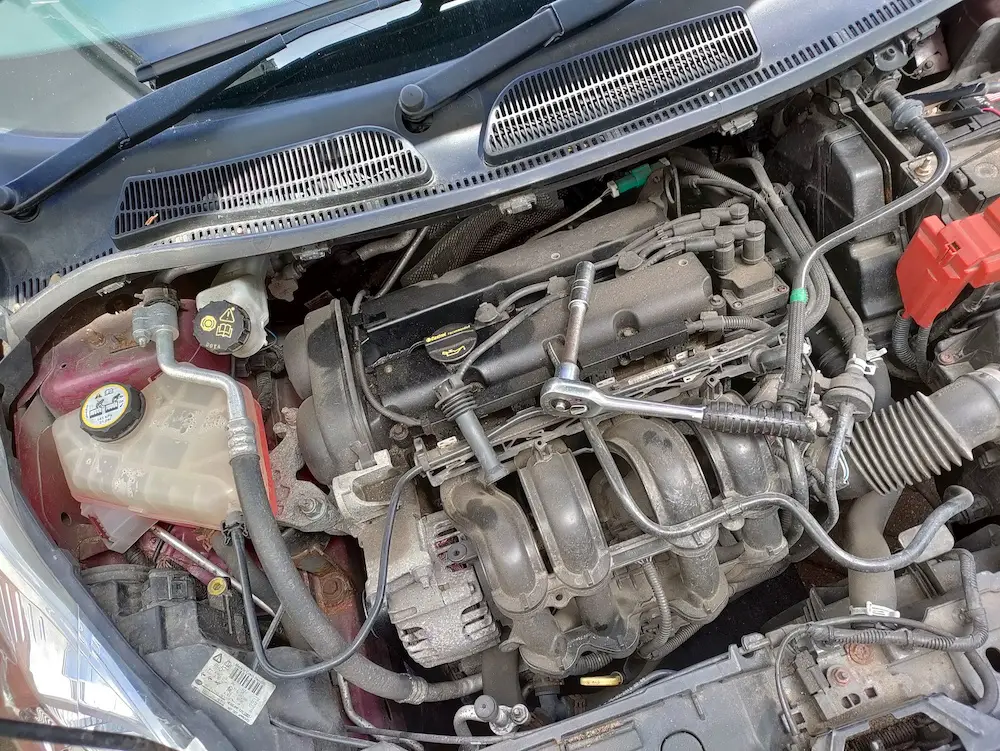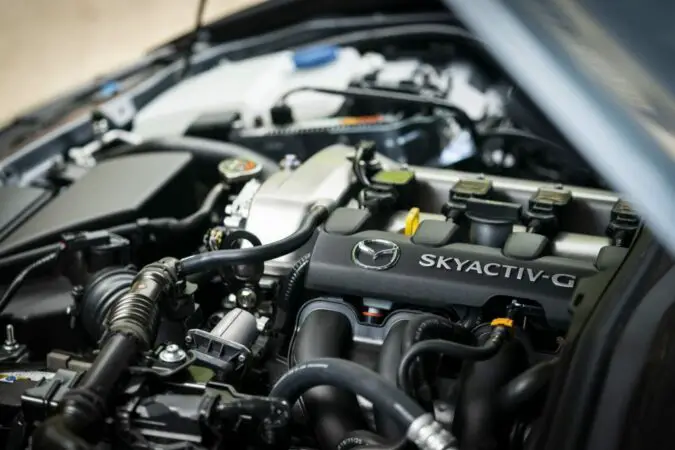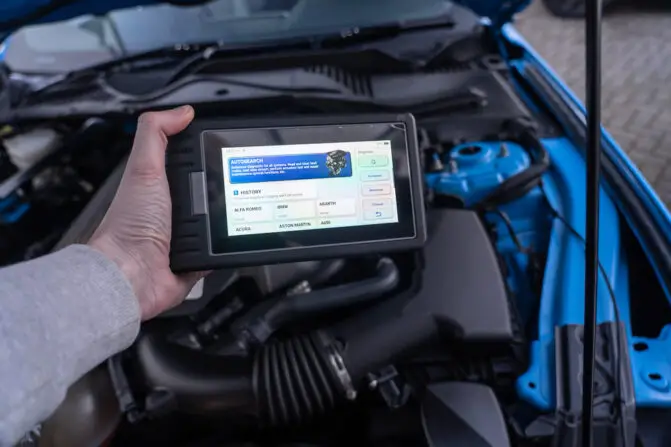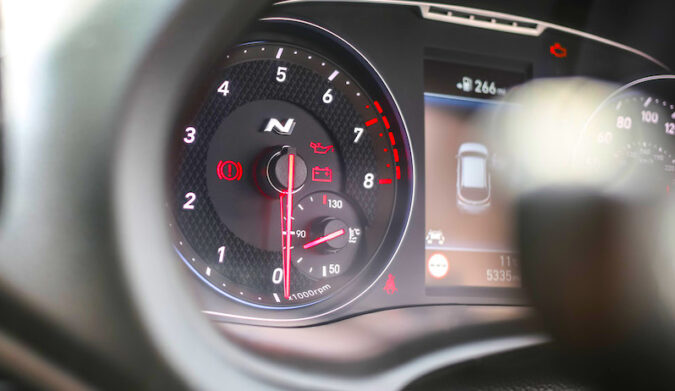A modern car is not complete without its electrical components and sensors. Without these electronics, your car may as well be dead. Among these sensors is the MAP sensor. It is as important to your car’s engine as anything. Who would have known that a small chip in plastic housing could make your car function properly? After all, what does a MAP sensor do? Let’s find out.
- What Is A MAP Sensor
- MAP Sensor Function
- MAP Sensor Voltage Chart
- Causes Of MAP Sensor Failure
- MAF Sensor (Mass Air Flow Sensor)
- MAF Sensor Function
- MAP vs MAF
- MAP Sensor Symptoms
- MAP Sensor Replacement
- Conclusion
- FAQs
They work together in perfect harmony to ensure your car remains functional. Thanks to technological developments, more and more sensors are being introduced to cars to foster practicality. Failure in addressing the issues in any of these electrical components and sensors can invite further problems to your doorstep.
It is safe to say that the MAP (Manifold Absolute Pressure) sensor is one of the most important sensors among modern cars. Basically, MAP sensors are why your car is functional in the first place.
Manifold Absolute Pressure Sensor
First and foremost, we need to learn what a sensor is and what it is responsible for. After all, that is where our answer lies.
Simply put, a sensor is a device programmed to receive (or identify) a certain type of input by analyzing the surrounding environment. The input is then relayed to other sensors (and electrical components) in the form of valuable processed data.
Similarly, a MAP sensor first identifies the air volume channeled through the intake manifold. Then it sends that (processed) data to the ECU, which has to decide the amount of fuel to inject.
MAP sensors are found in internal combustion engines instead of EVs (Electric Vehicles). This is because there is no existence of intake manifolds in EVs, but let’s save that for later.
MAP Sensor Function
Not all cars may have the same MAP sensors. Some may have a three-wire sensor while others have a four-wire sensor. However, what they do have in common is functionality. All MAP sensors compute the air pressure in the intake manifold and present the data in the form of voltages to the ECU.
For better understanding, let’s take the example of an accelerating car.
An accelerating car requires more air pressure to be regulated in its engine. To do that, the manifold flaps open. So now more air is channeling through the intake manifold. This is where the MAP sensor comes in.
It identifies the volume of air pressure present in the intake manifold. Upon measuring the air density, it saves the data in terms of voltages. So, a high air pressure means a higher voltage picked up by the MAP sensor.
The sensor then relays the data in voltages to the ECU. Depending on the number of voltages passed from the MAP sensor, the ECU then injects fuel into the engine to adjust the air-fuel ratio.
In technical terms, more air pressure means less vacuum in the intake manifold. The airflow brushes against a silicon chip that is part of the MAP sensor, creating a resistance that causes it to flex. Also, a higher air pressure means a ‘pushing’ effect is created on the strip. So a larger flex in the silicon chip would automatically trigger the sensor to send high voltages to the ECU.
It indicates less load on the engine, therefore, less need to inject fuel.
To recap, the only job of the sensor is to calculate air density and determine the engine mass airflow rate in the form of data. Then, it saves the data and relays it onto the ECU in terms of voltages.
MAP Sensor Voltage Chart
To check the accuracy of your MAP sensor, you’ll need a scan tool. Upon plugging the scanner into your car, some data should pop up on the scanner screen.
The data includes your MAP sensor readings and other important data including vehicle speed sensors (you can learn more in our guide on the P0500 Toyota code), engine load, and barometric pressure. Since the engine is neither on nor off, there is very little or no load on the engine. This is why you would see a higher MAP sensor reading.
There is always a direct relationship between the revs of your car and the MAP sensor readings (in terms of voltages). So as the car throttle increases, the sensor picks up higher voltages. In contrast, the sensor reading stabilizes when the car is idle because of more vacuum in the manifold.
After cranking the engine, you should notice some changes in the data shown on the screen, like a decline in your MAP sensor readings. This is because some load is being applied to the engine to make it up and running.
On a voltage chart, an idle car will show a flat voltage line indicating that the engine doesn’t require as much power and is in a stabilized form. However, as you increase the throttle on the car, you should notice a sudden spike in the diagram. The spike represents higher voltages being picked up by the MAP sensor.
Causes Of MAP Sensor Failure
Just like all electrical components, sensors can also fail. A car engine is not as protected as the occupants inside a vehicle. This can make the electrical components, especially sensors, vulnerable. As a result, they become prone to malfunctions and errors. Let’s discuss some of the causes which can cause the sensor to fail:
1. Dust And Dirt Accumulation
Since the engine is not as covered as the vehicle’s occupants, it can accumulate dirt very quickly. Eventually, the dust particles will enter most electrical components, including the MAP sensor, thus causing it to fail.
2. Excessive Heat
The sensor’s unusual location means that it is going through extremely hot temperatures. The sensor is located in a plastic housing which can melt under extreme temperatures pretty easily. Eventually, it would cause harm to the sensor’s chamber and the silicon strip.
3. Broken Or Loose Wires
A broken wire can eliminate the connection between important components, causing them not to work properly. Similarly, a loosened MAP sensor plug can disconnect the sensor from the battery, causing it to fail.
MAF Sensor
The Mass Airflow Sensor (MAF), as the name suggests, measures the (volumetric) flow of air into the engine. It is usually located near the vehicle’s air filter so that the exact volume of airflow can be measured before the air enters the intake manifold.
MAF Sensor Function
A MAF sensor comprises three main components: a vane airflow sensor, a hot wire, and a cold wire.
The vane airflow sensor is responsible for channeling air passed on from the air filter to the intake manifold. The vane airflow sensor uses a flap that opens and closes depending on the rush of the air. This allows the MAF sensor to send variable data (in voltages) to the PCM. The PCM then decides how much fuel needs to be injected accordingly.
As the air goes through the vane flaps, it is distributed into two channels containing different (hot and cold) wires. Of the two wires, only the hot wire contains a heated filament.
As more air brushes against the hot wire, the cooler it gets. As a result, it processes the temperature change and sends the data in terms of voltages to the ECU. The ECU then has to inject fuel accordingly to maintain the fuel-mixture ratio.
Meanwhile, the cold wire measures the airflow speed with the help of vibrations on a thin metal strip. So higher the speed of airflow, the more vibrations would be generated. These signals are converted into voltages and then sent to the ECU.
You must be wondering why the MAP and MAF sensors share the same functions. However, there’s a fine line that separates these terms from one another. Let’s see how.
MAP Vs MAF
By definition, a MAF sensor measures the volume (or flow) from the air filter to the intake manifold. In comparison, a MAP sensor measures air pressure in the intake manifold.
Secondly, a MAF sensor is located just after the air filter but before the intake manifold and the throttle body. In contrast, the MAP sensor is located just after the throttle body and directly on the intake manifold. So, unlike the MAF sensor, the MAP sensor determines the vacuum in the intake manifold instead of airflow.
Likewise, since the MAF sensor is not located directly on the throttle body, it ignores any cracks or leakages in the manifold. Because the MAP sensor measures the pressure instead of the airflow, it can determine any cracks or leakages in the manifold. This helps in providing a more accurate reading to the ECU.
Many modern cars use the combination of these sensors to provide more information to the ECU. As a result, the vehicle’s driving performance is enhanced. Moreover, these sensors can complement each other in different ways. For example, if a MAP sensor fails, the MAF sensor can act as a backup to the engine.
MAP Sensor Symptoms
A bad MAP sensor can adversely affect your car’s driving performance and diminish your engine’s life. A broken sensor should immediately be fixed and replaced; else, your car engine’s life will drastically deteriorate. There are several signs which can point fingers at a bad sensor. Let’s discuss how you can detect a bad MAP sensor in your car:
1. Rough Idling
When your car’s revs are fluctuating at their own will, that is when you know that you have a bad MAP sensor. This is because a bad sensor gives inaccurate readings to the ECU. So, the fuel-mixture ratio is disturbed, which causes the engine to fluctuate between the revs even though it is not required.
2. Variations In Fuel Economy
Inaccurate readings generated by the bad sensor can trick the ECU into thinking the engine is always on a high load. So, it injects more fuel into the engine even when it is not required. This unnecessary burning of fuel diminishes your fuel economy. If your car’s fuel economy worsens day by day, this is probably because of a bad MAP sensor.
3. Check Engine Light
If there is a check engine light in your dash, the chances are that it may be a bad MAP sensor. Thanks to technological advancements in the car world, you can spot even the slightest errors or malfunctions in your car’s system. So, the broken sensor can be shown as a check engine light on your dash.
4. Engine Power Losses
Sometimes your car can feel low on power because of reasons such as bad gas or faulty spark plugs. However, it’s because of a faulty sensor most of the time. Typically, a MAP sensor.
A bad sensor tricks the ECU into thinking that the engine is on low load, so less power is needed. As a result, the ECU fails to deliver the power as requested. This is why you feel a delay whenever you floor your car or the reason why your car acts lazy.
5. Black Smoke From Tailpipes
A bad MAP sensor gives off inaccurate readings to the ECU, like high voltages, even though there is less air pressure in the manifold. As a result, the ECU has to inject unnecessary fuel into the engine and cause the engine to run rich. Eventually, the tailpipes start giving away plumes of black smoke.
6. Aftermarket Engine Modifications
All car manufacturers program their car’s MAP sensors to accommodate the stock engine. This means that these sensors do not assist aftermarket engine modifications, like forced induction and nitrous, in any way. So, if you are experiencing unusual behavior with your car’s engine, it’s probably because of the aftermarket engine mods.
7. Car Stalling And Difficulty In Starting
A broken sensor can disturb the engine’s air-fuel mixture ratio. Consequently, the engine runs lean, which can not only damage the engine but also cause your car to stall. Also, because of the imbalance created in the chamber by the lean fuel-mixture ratio, your car takes longer to start. All these factors indicate a bad MAP sensor because it is the sensor that is responsible for determining the engine load.
8. Failed Emission Tests
There’s no denying that a bad MAP sensor adversely affects the fuel-mixture ratio by providing imprecise air pressure data. This means that the ECU cannot maintain the stoichiometric 14.7:1 air-fuel mixture issue. Otherwise, the car would run either too lean or too rich. Ultimately, this will increase the CO (Carbon Monoxide) and NO2 (Nitrogen Oxide) emissions.
9. Barometric Pressure Concerns
A Barometric Pressure Sensor (BPS) measures the surrounding atmosphere’s air pressure. It varies according to the sea level. However, a bad sensor fails to consider the variations made by the BPS. This may be why your engine delivers less output in a high sea-level area.
MAP Sensor Replacement
With the right tools (and knowledge), you can easily replace a MAP sensor at home without any professional guidance. Not only can you save a couple of hundred bucks but you can also save time by avoiding going to the mechanic.
First of all, you would need to diagnose the sensor to determine whether you actually need to replace the sensor or not. To diagnose it, you’ll need an OBD2 scanner. Plug the scanner into the OBD2 port which can be found in the driver’s side dashboard (for most cars). If there is any problem with the sensor, a list of fault codes will pop up on the scanner screen. This indicates that the sensor needs to be replaced.
Not all cars have the same type of MAP sensors, which is why you’d need to check what sensor type your car has. You can determine your car’s sensor type by referring to the car’s service manual.
You can pick these sensors up on Amazon. These can cost anywhere between $10-$100 depending on your car’s make and model.
Conclusion
In this article, we have covered everything related to the MAP sensor. We discussed how it works, including the science and mechanics behind it. We saw how simple yet complicated this sensor is. A thorough inspection of the sensor’s voltage chart showed us how this sensor reacts (and adapts) to different driving scenarios.
Then we discussed the MAF (Mass Air Flow) sensor and compared it to the MAP sensor. We learned how effectively it acts as an alternative to the MAP sensor.
Lastly, we focused on the symptoms of a broken MAP sensor and the effects it can have on the car’s engine.
FAQs
What Is A Manifold On A Car
An intake manifold is the last step before the air enters an engine. Simply put, the intake manifold is how the car breathes. After channeling air through the air filter, the intake manifold distributes the air to the cylinder heads. Then, with the help of fuel injectors, the gas mixes, allowing the combustion to occur.
How To Access The MAP Sensor
First and foremost, unplug your car’s battery by loosening the nut on each terminal side. Next, locate the MAP sensor; you can find it near the intake manifold and on the throttle body. Ensure to unplug wiring harnesses, including the vacuum line, for easier access to the sensor. Unscrew the two bolts connected to the sensor. Now unplug the sensor’s power source to the battery and pry out the sensor.
How To Clean The MAP Sensor
Firstly, unplug the car’s battery to avoid harming its electrical components. Next, locate the sensor and remove any wiring harnesses in the way for better access. Now, remove the sensor. Use a MAF cleaner and spray the liquid onto the MAP sensor. Now use a soft cloth to clean the sensor. Let it dry for a while before re-installing the sensor.
How To Reset MAP Sensor
Safely pry out the sensor by loosening the bolts holding it together. Give the sensor about 15 minutes to re-learn. Then, follow the steps back and re-install the sensor. If the code keeps coming up, then you probably have a faulty sensor.
Where Is The MAP Sensor Located
A MAP sensor is located in different areas of a car including the engine and dashboard. In all modern cars, the sensor can be found stuck directly on the intake manifold and the throttle body. Meanwhile, some older vehicles have the sensor located in the engine firewall.
Can You Clean A MAP Sensor
Yes, the MAP sensor can easily be cleaned with proper tools and some care. The process is quite simple. It involves safely plugging out the sensor and then spraying it with a MAF cleaner. Also, make sure to use a soft cloth (or towel) to avoid any damage to its electrical components. After leaving it to dry for about 5 minutes, your sensor is now clean.
What Happens If You Unplug A MAP Sensor
Doing so will always make the engine run on a high load. As a result, fuel consumption would increase, causing the fuel economy to deteriorate. Not to mention the harm caused to the engine because of the unnecessary burning of fuel.
Where Is The Barometric Pressure Sensor Located
The placement of the barometric pressure sensor can vary on a car’s model. Older cars tend to have the barometer pressure sensor integrated into the map sensor. Whereas most modern cars tend to have a barometric pressure sensor on the engine firewall.
What Happens When A MAP Sensor Goes Bad
A bad (or broken) map sensor gives inaccurate readings to the ECU. As a result, it is unable to maintain the appropriate fuel-mixture ratio. Eventually, it creates several other problems like rough idling, high fuel consumption, low fuel economy, and power losses.
How To Fix A MAP Sensor
Plug the voltmeter into the map sensor to measure the voltage frequency. This can be done by back probing the map sensor’s signal wire to the voltmeter. Also, remember to turn on the ignition but not to crank the engine. If you are unable to get the 5 volts reference, then the sensor is probably faulty and needs to be replaced. If you can get the 5 volts reference, the sensor is working fine.
What Does A 4 Bar MAP Sensor Do
It helps the sensor multiply the volume of air pressure that it can measure. Typically, (aftermarket) forced induction engines that require a boost of up to 44psi use the 4 bar map sensor.
What Does A Bad MAP Sensor Do
A bad map sensor provides inaccurate voltages to the ECU (or the ECM). As a result, the ECU cannot maintain the perfect air-fuel ratio and fails to meet the 14.7:1 stoichiometric gasoline combustion ratio. So not only does a bad map sensor destroy your car’s engine, but it also increases fuel consumption.




